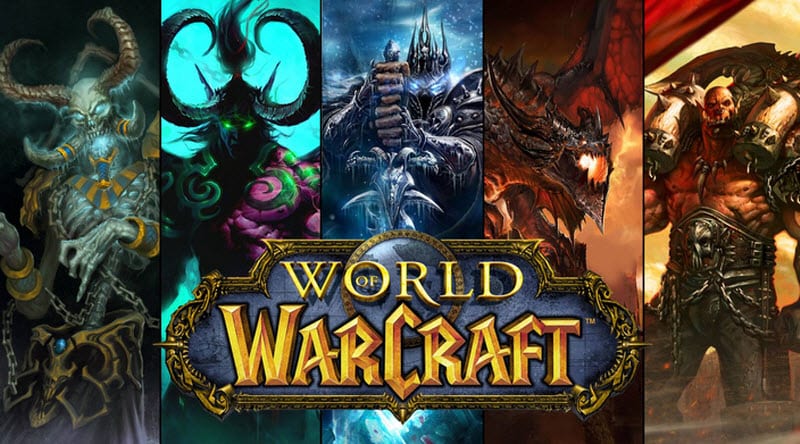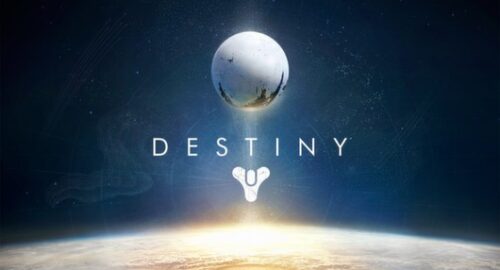Games are great. Services are great. So you would think that combining the two would result in something magical. Like peanut butter and chocolate or Hideo Kojima and a constant state of confusion. They meld together beautifully to form a mass of pleasure for at least one of our senses.
We have had public outrage involving numerous games and questionable business practices recently and the executives at the big publishers are starting to see consumers start to turn away from games such as looter shooters, especially if there is nothing to show the players that it is worth their time sticking around.
In fact, the need to show that micro-transactions are not in a game is so high right now that games developers are starting to use a lack of additional paid content as almost a feature of the game:
“Hey guys, We got a new Star Wars game coming out, here’s all you need to know”
- Single Player
- Lightsabers
- Cameos from Star Wars characters
- NO MICROTRANSACTIONS WE DOUBLE AND QUADRUPLE PROMISE
So what led to games as a service having such a bad reputation? Loot boxes? Gambling for kids? Horse armour? Was that always the plan? Was it purely to monetise gaming and squeeze more money from our favourite hobby or was it to provide longevity and quality for us in an era of instantaneous gratification where we consume and forget so quickly that industries are trying to spit out media as fast as they can to satiate our hunger for the next?
Let’s take a journey, shall we?
THE BACKGROUND
Oh good you’re still here, so my obviously riveting introduction above makes the point that there are things we as consumers never really seem to consider much when it comes to additional chargeable content. We tend to make our stand as far as how positive or negative the feedback for a game as a service is. If a game is great we are happy, we review it well, we let others know too, we get online and while away the hours content. When a game is not meeting our expectations we revolt, we unite across social media and let the world know how bad the situation is but getting down to the root of it all is seldom done.
Games As A Service as we know it is somewhat of an evolution of the MMO and MOBA industry which were the GAAS of their time in the 2000s. An industry which brought in millions of players and had player retention to over a decade in some cases.
World of Warcraft is such a case. According to statistics site statista.com, Activision Blizzard last reported players subscriptions for World of Warcraft in 2015 with a count of 5.5 million. Although statista.com are forecasting a drop in the player base, they are predicting 4.6 million players still playing in 2023.
That’s five and half million subscriptions worldwide for a game that was 10 years old at the time. That’s also four and a half million players projected to still be playing the game nearly 20 years after release. Now that’s what you call retention!
Its subscription based games like Warcraft and other big hitters like EVE Online and RuneScape that paved the way for what we now know as Games As A Service. Soon after the MMO influx, MOBAs were becoming the next big thing. League of Legends, DOTA and most recently Overwatch were massive and alongside games like Counterstrike and StarCraft, ushered in the era of global eSports with South Korea leading the charge. Streaming services like Twitch and YouTube increased the reach for eSports viewership and thus increased interest in games as service games.
The format was simple and easy to understand; subscription charges helped games developers with a continued revenue stream which in turn let them create content on a regular basis for the game. This was a successful model and a model that benefited the ones who made the game and the ones who played the game. Gamers knew why they paid the subscription and where that money was going. Developers knew how much revenue they would be getting for the foreseeable future and release regular content accordingly. It was foolproof. Who would ever want to take advantage of such a mutual beneficial system?

EVOLUTION
So, what happened to the model that worked so well?
Well, production costs went up, the age of Netflix and on demand services began and Bethesda charged people to download horse armour in The Elder Scrolls IV: Oblivion.
Developers needed more money and we needed games to either release faster or last longer to keep us entertained. Any smart business knew that to keep up with the new demand, longevity was the key and monetisation was the key hole. Does that metaphor work? You insert the key into the keyhole and twist so the money is like the – yeah it works, let’s roll with it.
So what did this new world of game services end up looking like? There were 3 main formats:
- Ongoing Service: Base game comes out, keep delivering content for years after release with regular small/medium content and yearly large content. Charge for most additional content.
- Micro-transactions: Aforementioned horse armour. Added cosmetic items, loot boxes, any other game enhancing items for a charge. Also for a crack, why not throw in an in game currency that you can top up with real money?
- Season Passes: After initial game comes out, charge for a pass that will provide additional content for either a year or until the next game in the series comes out.
- Free-to-Play: Get the game for free but with very slow progression and pay to progress faster or for better characters or items etc.
So which games can you throw in which category?
Destiny is obviously the game that broke the camels back on console. With massive hype pre-release and a lukewarm reception post release, Destiny‘s gameplay was lauded but it’s base game content wasn’t. Then, as has been the case with a few recent looter shooters, lo and behold, after a few rocky months, Bungie stepped up their game (pun obviously intended) with great updates and a fantastic expansion in The Taken King. Mind you, you had to pay for them in season pass form and with each mini expansion separately. Eventually micro-transactions were added so basically Destiny had 3 of the above and it seems Destiny 2 may also be going free to play so Bungie went one step further then most- A whole franchise as a service.
Many games followed this format, Destiny 2 obviously, The Division and Ghost Recon Wildlands were the most notable. Also battle royales became a thing and they were also monetised with Fortnite being the main and possibly the biggest recent global money maker with the free-to-play model.

Let’s not forget the massive chunk of the games industry that the Mobile Gaming market carved for itself. Quickly becoming a behemoth, mobile apps were soon the way to go for that sweet internet money. Big franchises like Call of Duty, Pokémon, Jurassic World and more jumped on with free to play games and wound me up something chronic. I could either wait 2 days for my T-Rex egg to hatch or PAY £4 TO HATCH IT IMMEDIATELY. Are you kidding me? Pay to win mechanics? After all the time I sunk in already? How easy do they think I am?
OK, I paid the £4.
And that’s the crux of it – from games developers to boardroom executives, they all know that somewhere around the world there will be people that will pay. Pay for that season pass, pay for the subscription, pay for the horse armour. Jesus Christ, that horse armour.
To help us consumers along with this spending spree, marketing budgets are increased to make sure we pay up more and faster. Reveals, trailers, trailers of reveals, E3 conferences, big Steve Jobs style keynotes, it’s all there and we love the spectacle of it all. Which brings me back to the question, title and whole point of this article; do Games As A Service work?
Well, Destiny tells you it does work. Destiny 2 and Activision’s surrendering of the franchise tells you it doesn’t.
Anthem and Fallout 76 will tell you it doesn’t work but those cases were more focused on poor developer planning and overall poorly made game rather then outrages around paid add-ons.
Battlefront II tells you not only does it not work but it’s a disaster. EA will take all the hate and negative press you can throw at them and tell you they aren’t loot boxes or pay to win but SURPRISE MECHANICS!
Yes, we know EA are the greedy souless corporate machine but with all the bad PR they received for Battlefront, including governments around the world discussing the issue and Disney getting involved, they STILL won’t give up on micro-transactions and chargeable content. That should be a clear indicator of how successful it is for them.
Perhaps the question is who does Games As A Service work for?
It certainly works for the developer in most cases. Even if you take Anthem as an example – a game plagued with issues since day one. Wait, not day one, the pre-release day. They had that damn spreadsheet of release dates, you know what I mean.
Anthem was a mess, small amount of base game content, poor end game, inconsistent and sometimes nonsensical looter mechanics and that’s just the start. However, months after release, with the game looking to be all but dead and players quitting in droves, you have to remember, player retention or not, Bioware and EA have already made money from the pre-orders and day one purchase of the game. I mean EA may bin off Bioware but the point still stands.

WHERE WAS I? AH YES…
Now the final question, do Games As A Service work for us as gamers?
Despite my hate of micro-transactions and the monetisation of games that have no right being monetised, I have to say yes.
Developers are making a lot of revenue through micro-transactions and post game chargeable content all because gamers are spending that money. Yes we like to think it’s all just naive parents that let little Timmy go wild on the Fortnite virtual store but that isn’t the case.
When you consider that negative reactions, poor reviews, government involvement and generally bad PR hasn’t really slowed down the games as service machine, it’s a clear indicator they arent going anywhere just yet.
There is an argument that we have reached saturation point and that gamers are feeling fatigued with Games As A Service games. This could be true and only time will tell.
There is also a new console generation on the horizon where both Sony and Microsoft are touting better load times and general smoothness. You could say games as a service would be even better on next gen tech in terms of performance. Maybe it’ll be worse. Maybe game developers are thinking the same. Maybe I just want the Mass Effect trilogy remade for the PlayStation 5.
Thanks for sticking all the way to the end, I intended this to be a semi-deep dive and I didn’t want to get too much into the statistics and figures, rather opting to create more discussion regarding our personal experiences and thoughts relating to Games As A Service. It’s something that’s become a massive part of this hobby that we love so much and it would be great to get stuck in with you all and consider what the present and future holds for us as consumers of the content and for the developers that work hard to make that content.







